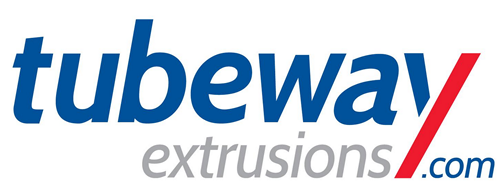Tubeway manufacture and supply a wide and comprehensive variety of plastic tubes and pipes, in all shapes and sizes, made from different thermoplastics which between them support high temperature usage, UV protection, food safe applications, impact environments, lightweight and low cost projects, short and high bulk production runs. Most plastic tubing can be run in rigid and flexible material, with a choice of wall thickness, colour and lengths.
Tubeway's experienced Sales team will be happy to answer any questions you have about the different plastic materials, including suitability for specific purposes, colours available and whether they will be UV protected. Please contact us by email or phone for any clarification required.
Most plastic tubes and pipes end up in ducts or being buried in soil, sand, water or concrete, when there is no need for exact colour shades other than to differentiate by usage. For most of our tubes and pipes there are a range of standard colours available, although if matching to a particular shade is essential, it may be possible to an exact RAL Code or sample, with any implications for lead time and minimum order confirmed when we quote. Note that manufacture may be from either pre-mixed material (where colour from batch to batch is more consistent) or masterbatched material, where pigment is added to a natural or base colour at time of run. Let us know how critical these factors are, and if there is a need for UV protection.
Below is a working summary of each thermoplastic material we can supply for plastic tubes, to assist your choice. This is for guidance and is not intended to be a definitive list - more information on material specifications can be provided on request.
UPVC - Rigid / Unplasticised PolyVinyl Chloride
A familiar and common material. The best all-rounder.
- Pros - Durability, cost, stiffness, suitability for outdoor use, chemical resistance. Self-extinguishing, food safe grades, good insulator, easy to bond and weld
- Cons - Can shatter or split, clear grades not UV resistant, poor performance at temperature extremes
- Common Products - Water pipes, window frames, trunking, construction / fitout profiles, edgings / trims
PVC - FLEXIBLE / PLASTICISED POLYVINYL CHLORIDE
Also in common use.
- Pros - Choice of hardnesses, will co-extrude with uPVC, easy to colour, versatile, cost
- Cons - Use of Phthalates to make flexible (regarded as hazardous and can leach), mostly indoor grades
- Common Products - Garden hose, flooring, cable coatings, shower curtains, upholstery, raincoats
ABS - Acrylonitrile Butadiene Styrene
- Pros - Tough, good impact resistance and range of temperature performance
- Cons - Cost, indoor use only, not food safe
- Common Products - Lego, computer keyboards, 3d printer filament, luggage, automotive trims / components
HIPS - High Impact PolyStyrene
- Pros - Cost, strength
- Cons - Brittle, low density, generally indoor use only
- Common Products - POS / signage displays, chemical tanks, cutting boards, moulds
PC - PolyCarbonate
- Pros - High impact strength, transparency, temperature and flame resistance
- Cons - Cost, difficult to extrude
- Common Products - Glazing / conservatory sheet, eyewear, lighting, riot gear, visors / screens, mobile phone casings, CD / DVD / BluRay discs
PP - PolyPropylene
- Pros - Tough, heat and chemical resistance, low friction
- Cons - Poor UV resistance, flammable, difficult to paint
- Common Products - Yogurt pots, cutlery, hinges, kettles, chairs, carpets, ropes
PE - PolyEthylene (sometimes called Polythene)
The most commonly used plastic in the world. For PE's as a whole
- Pros - Good chemical and moisture resistance, pliability (stretching rather than breaking). Performance in temperature extremes
- Cons - Vulnerable to UV light, flammable
- Common Products - Include drink bottles, containers for food, cosmetics and medicines, packaging and of course plastic bags
HDPE - High Density PE
- Pros - Decent stiffness and strength, pressure rating pipe applications, solvent resistance
- Cons - Stress cracking, mould shrinkage
- Common Products - Toys, fluid pipes, wheelie bins, rawlplugs
MDPE - Medium Density PE
- Pros - Shock and drop resistance, stress crack resistance
- Cons - Lacks the more unique properties of LDPE and HDPE
- Common Products - Gas pipes, sacks, threaded fittings
LDPE - Low Density PE
- Pros - High pliability and clarity when thin, cost
- Cons - Lack of stiffness, tensile strength
- Common Products - Six pack rings, stretchy films, product packaging



